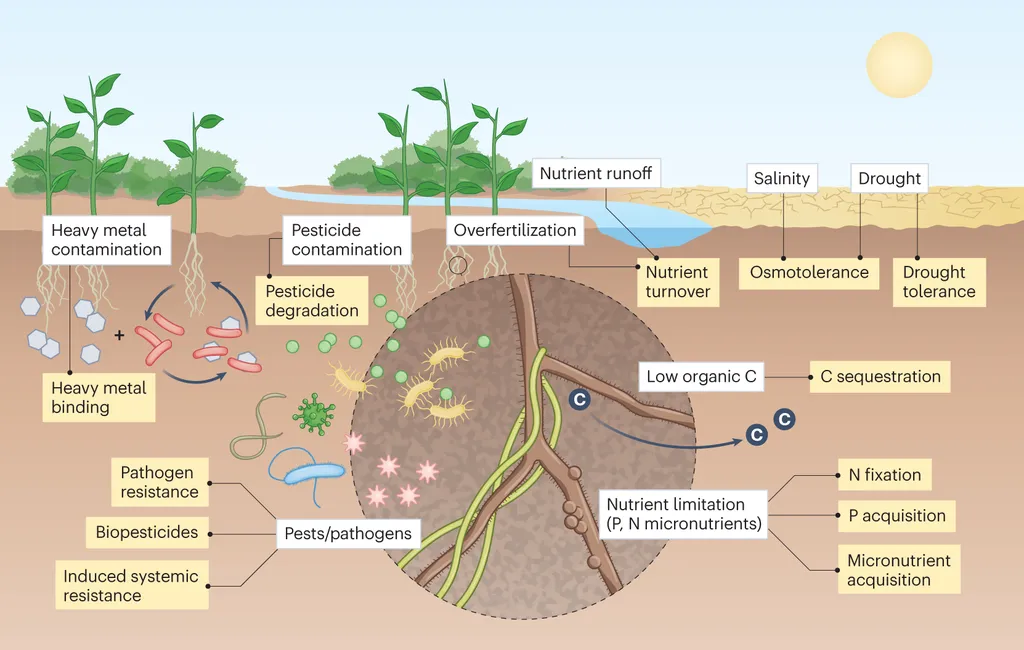In the vast, diverse landscapes of Russia, beneath our feet lies a hidden world teeming with microbial life, playing a pivotal role in maintaining healthy ecosystems and supporting sustainable agriculture. A recent study, led by E. A. Ivanova from the Laboratory of Soil Carbon and Microbial Ecology at the Dokuchaev Soil Science Institute, has shed new light on the spatial distribution patterns of two crucial microbial phyla, Acidobacteriota and Planctomycetota, across Russian soils. The research, published in the journal Scientific Reports (translated as “Nature Research Reports”), leverages machine learning techniques to map these microorganisms, offering insights that could reshape our understanding of soil ecosystems and their services.
The study employed a machine learning approach, specifically the Random Forest algorithm, to generate digital distribution maps of Acidobacteriota and Planctomycetota using data from 16S rRNA gene metabarcoding of topsoils. These maps were created using a variety of environmental variables, including climatic, topographic, vegetation, geological, and soil data. “By employing machine learning, we were able to visualize predictive biogeographic patterns in soil microbial taxa abundance at the phylum level,” Ivanova explained. This innovative approach allowed the researchers to identify large-scale distribution trends of these microbial phyla in soils, despite the heterogeneous nature of the source data.
The results revealed that both Acidobacteriota and Planctomycetota exhibited similar spatial distribution patterns, with relative abundance decreasing from North to South. However, the factors influencing their distribution differed. For Acidobacteriota, vegetation cover, surface temperature, and soil pH were significant predictors. These microorganisms were more abundant in areas with dense vegetation, stable surface temperatures, and acidic soils. In contrast, the relative abundance of Planctomycetota was mainly influenced by climatic variables, particularly precipitable water vapor, with reduced abundance in regions with higher levels of this factor.
The implications of this research are far-reaching, particularly for the energy sector. Understanding the distribution and abundance of soil microbial taxa can aid in the development of sustainable agricultural practices, which in turn can support bioenergy production. For instance, Acidobacteriota are known to play a role in carbon cycling, a process crucial for soil health and carbon sequestration. By identifying the environmental factors that influence their distribution, we can better manage soils to enhance these ecosystem services.
Moreover, the machine learning approach used in this study could revolutionize how we study and understand soil microbiomes. As Ivanova noted, “Focusing on higher taxonomic ranks less sensitive to methodological variation enabled us to identify preliminary large-scale distribution trends of microbial phyla in soils.” This approach could be applied to other regions and microbial taxa, providing a more comprehensive understanding of soil microbial diversity and its role in ecosystem functioning.
In the future, this research could pave the way for more targeted and effective soil management strategies, supporting sustainable agriculture and bioenergy production. By harnessing the power of machine learning and advanced sequencing technologies, we can unlock the secrets of the soil microbiome, ultimately contributing to a more sustainable and resilient future. As we continue to explore the intricate world beneath our feet, the potential applications of this research are as vast and diverse as the landscapes it seeks to understand.

